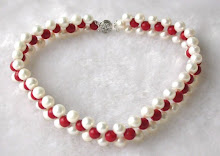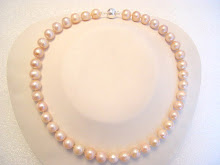
Hindu astrological belief in natural pearls
The Vedic tradition describes the sacred Nine Pearls which were first documented in the Garuda Purana, one of the books of the Hindu holy text Atharvaveda. Ayurveda contains references to pearl powder as a stimulant of digestion and to treat mental ailments. According to Marco Polo the kings of Maabar (now known as the Coromandel Coast) wore a necklace of 104 rubies and 104 precious pearls which was given from one generation of kings to the next. The reason was that every king had to say 104 prayers to his "idols" every morning and every evening.At least until the beginning of the 20th century it was a Hindu custom to present a completely new, undrilled pearl and pierce it during the ceremony.
The Vedic tradition describes the sacred Nine Pearls which were first documented in the Garuda Purana, one of the books of the Hindu holy text Atharvaveda. Ayurveda contains references to pearl powder as a stimulant of digestion and to treat mental ailments. According to Marco Polo the kings of Maabar (now known as the Coromandel Coast) wore a necklace of 104 rubies and 104 precious pearls which was given from one generation of kings to the next. The reason was that every king had to say 104 prayers to his "idols" every morning and every evening.At least until the beginning of the 20th century it was a Hindu custom to present a completely new, undrilled pearl and pierce it during the ceremony.


